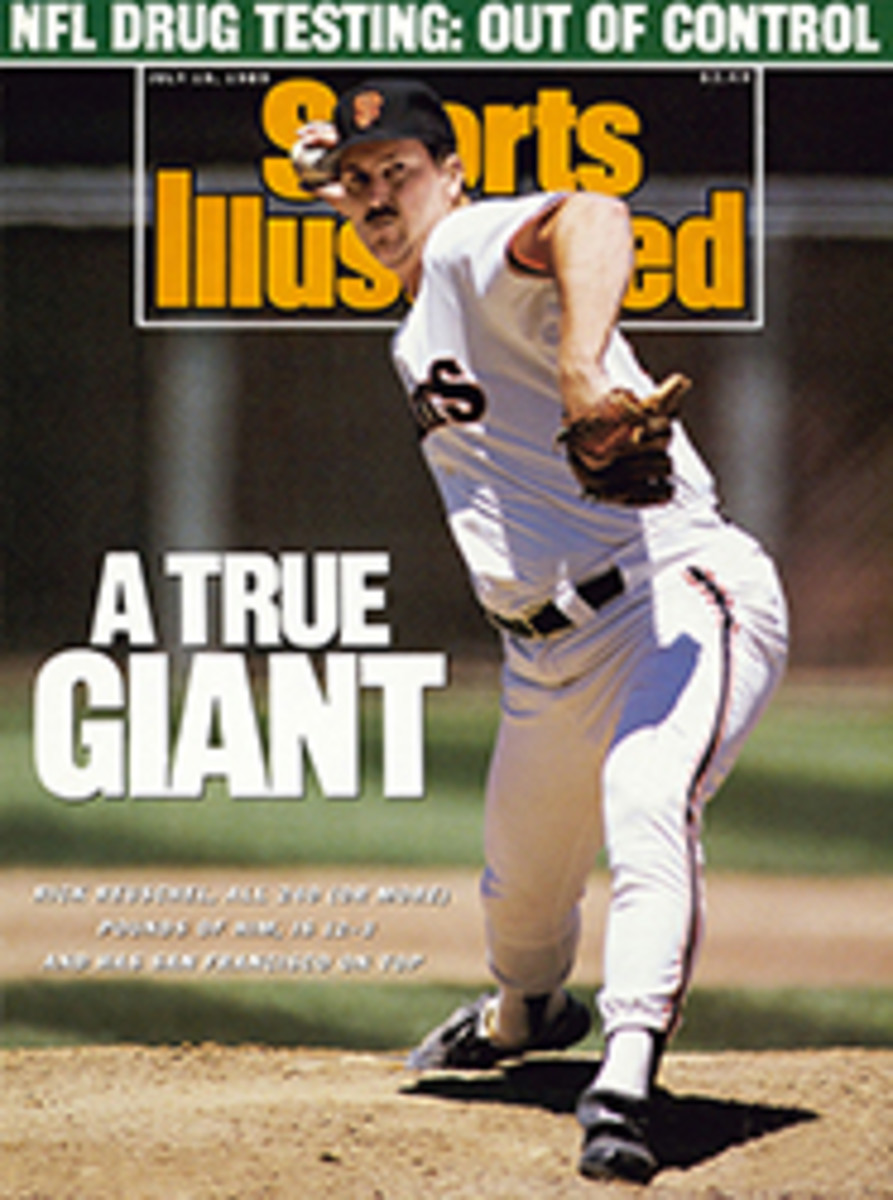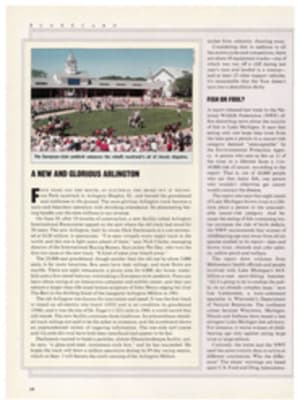
LETTERS
PINFIRING AND BLISTERING
In the May 8 issue, A Tale of Two Horses described the commonly employed veterinary practice of treating orthopedic injuries in racehorses by blistering and pinfiring. Unfortunately, there was no mention of the medically and ethically questionable nature of these treatments.
Blistering means applying caustic substances to the horse's leg to induce irritation and inflammation. The procedure damages capillaries and causes the formation of blisters in the superficial layers of the skin. Pinfiring is the burning of a series of holes through the skin and underlying tissues of a horse's leg with a red-hot firing iron or an electric cautery instrument to produce inflammation around joints and tendons. The rationale behind blistering and pinfiring is that an acute inflammatory process facilitates the healing of chronic orthopedic and soft-tissue injuries.
Both methods, however, may result in blistering of tissue, sloughing of skin, and severe pain and stress to the animal. The treatments can produce such agony that horses have been known to resort to self-mutilation unless tranquilized or restrained or both. In one report we received, a mare, unable to bear the pain of blistering, killed herself by banging her head against the stable wall.
In addition, the efficacy of blistering and pinfiring has never been documented. In fact, we are not aware of any case in which either of these methods produced results that could not have otherwise been achieved by simply resting the animal. Adams' Lameness in Horses, the most authoritative book on equine orthopedic medicine, states, "In general, it can be said that blistering is an ineffective and painful method of therapy. Results obtained are due to the enforced rest of the horse."
To demonstrate the ludicrousness of blistering as a therapeutic method, researchers at the University of Bristol in England presented the following analogy in the April 1981 issue of Equine Veterinary Journal: "If one twists an ankle the swelling and loss of function are not inhibited or made better by scalding the outside of the leg with boiling water although the pain from the latter insult may temporarily overwhelm that from the former." The researchers concluded that much of the rationale supporting the continued application of blistering and pinfiring is "patent nonsense."
These researchers also wrote, "The art of [pin]firing persists as an anachronism. It is high time we acknowledged that [pin]firing is a deforming, painful and superfluous operation for which there is no modern justification.... The debate which still continues about the value of [pinfiring] should have ended with the emergence of veterinary medicine as a humane and scientific profession at the end of the last century."
One well-known professor of veterinary medicine used to tell his students that there are only two reasons for blistering or pinfiring a horse: to justify a fee and to put the owner at ease by appearing to be doing something about the problem. Sadly, neither of these reasons considers the horse, who is unnecessarily inflicted with the pain and suffering associated with such (mis)treatment.
ROBERT O. BAKER
Field Investigator
The Humane Society of the United States
Washington, D.C.
SHOELESS JOE
I agree with Nicholas Dawidoff's POINT AFTER (June 12) contending that Shoeless Joe Jackson was too good to be left out of the Hall of Fame. After all, numbers do make a ballplayer, and Jackson's numbers are definitely Hall material. Jackson made a mistake, but if potential Hall of Famers are to be judged on their personal failures as well as their feats on the field, a lot of other worthy players will be excluded too.
ANDREW WAXMAN
El Paso
Dawidoff writes, "True, Jackson probably did accept an envelope with $5,000 in it. But his performance on the field suggests that his sense of decency prevailed." Using this rationale, you could say that it would be O.K. to accept gamblers' money and then decide whether you wanted to go through with the fix. Thank god Dawidoff wasn't baseball commissioner at the time.
WILLIAM BRAVICK
North Port, Fla.
BFS
Your article Are Their Days Numbered? (May 22) presented an interesting argument for not overworking pitchers before they reach age 25. However, while Craig Wright cited Frank Tanana, Dave Rozema and Mark Fidrych as examples of burnout, there was no mention of pitchers whose records contradict the theory. Consider (below right) the records—including BFS (batters faced per start)—of Walter Johnson and Christy Mathewson, two of baseball's biggest winners. In an age of useless stats, what baseball doesn't need is one more, like batters faced per start.
NICK LAGEMANN
The Bronx
•In his book The Diamond Appraised, written with Ranger pitching coach Tom House and from which SI's article was adapted, Wright accounts for Johnson and Mathewson by noting that they pitched in the dead-ball era. Thus, while they faced a lot of batters per start early in their careers, they probably threw fewer pitches than modern-day pitchers. That's because, without the constant threat of the home run, they did not have to pitch around batters, as their modern counterparts do.—ED.
[originallink:10661666:702397]
PHOTO
CULVER
PHOTO
Letters to SPORTS ILLUSTRATED should include the name, address and home telephone number of the writer and should be addressed to The Editor, SPORTS ILLUSTRATED, Time & Life Building, Rockefeller Center, New York, N.Y. 10020-1393.

